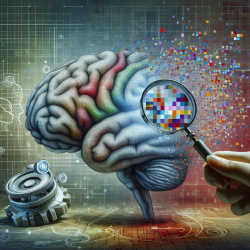Introduction
In the realm of psychiatry, the integration of machine learning models with neuroimaging data has marked a significant advancement in diagnostic processes. However, the generalizability of these models remains a critical challenge. A recent study titled "Sampling inequalities affect generalization of neuroimaging-based diagnostic classifiers in psychiatry" sheds light on the underlying issues affecting the generalization of these models, primarily focusing on sampling inequalities.
Key Findings
The study conducted a comprehensive meta-research assessment of neuroimaging-based models across 476 studies, revealing significant global sampling inequalities. The sampling Gini coefficient was notably high at 0.81, indicating severe disparities in sample representation. These inequalities varied across countries, with coefficients ranging from 0.47 in China to 0.87 in the UK. Such disparities are significantly influenced by national economic levels, suggesting that economic factors play a pivotal role in the accessibility and development of these models.
Implications for Practitioners
For practitioners, understanding these sampling inequalities is crucial for improving the generalizability of diagnostic classifiers. Here are some practical steps to consider:
- Diversify Sample Representation: Ensure that samples are representative of various socioeconomic statuses, ethnic groups, and geographic regions to enhance model generalizability.
- Independent Testing: Conduct independent cross-country validations to assess model performance across diverse populations.
- Improve Transparency: Enhance technical transparency and data availability to allow for replication and validation of findings.
Encouraging Further Research
The study highlights the need for further research to explore the impact of economic disparities on sampling inequalities and model performance. Practitioners and researchers are encouraged to delve deeper into understanding how these factors influence the clinical applicability of neuroimaging-based diagnostic models.
Conclusion
Addressing sampling inequalities is essential for translating neuroimaging-based diagnostic classifiers into effective clinical tools. By diversifying sample representation and improving methodological transparency, we can enhance the generalizability and reliability of these models, ultimately leading to better diagnostic outcomes in psychiatry.
To read the original research paper, please follow this link: Sampling inequalities affect generalization of neuroimaging-based diagnostic classifiers in psychiatry.










